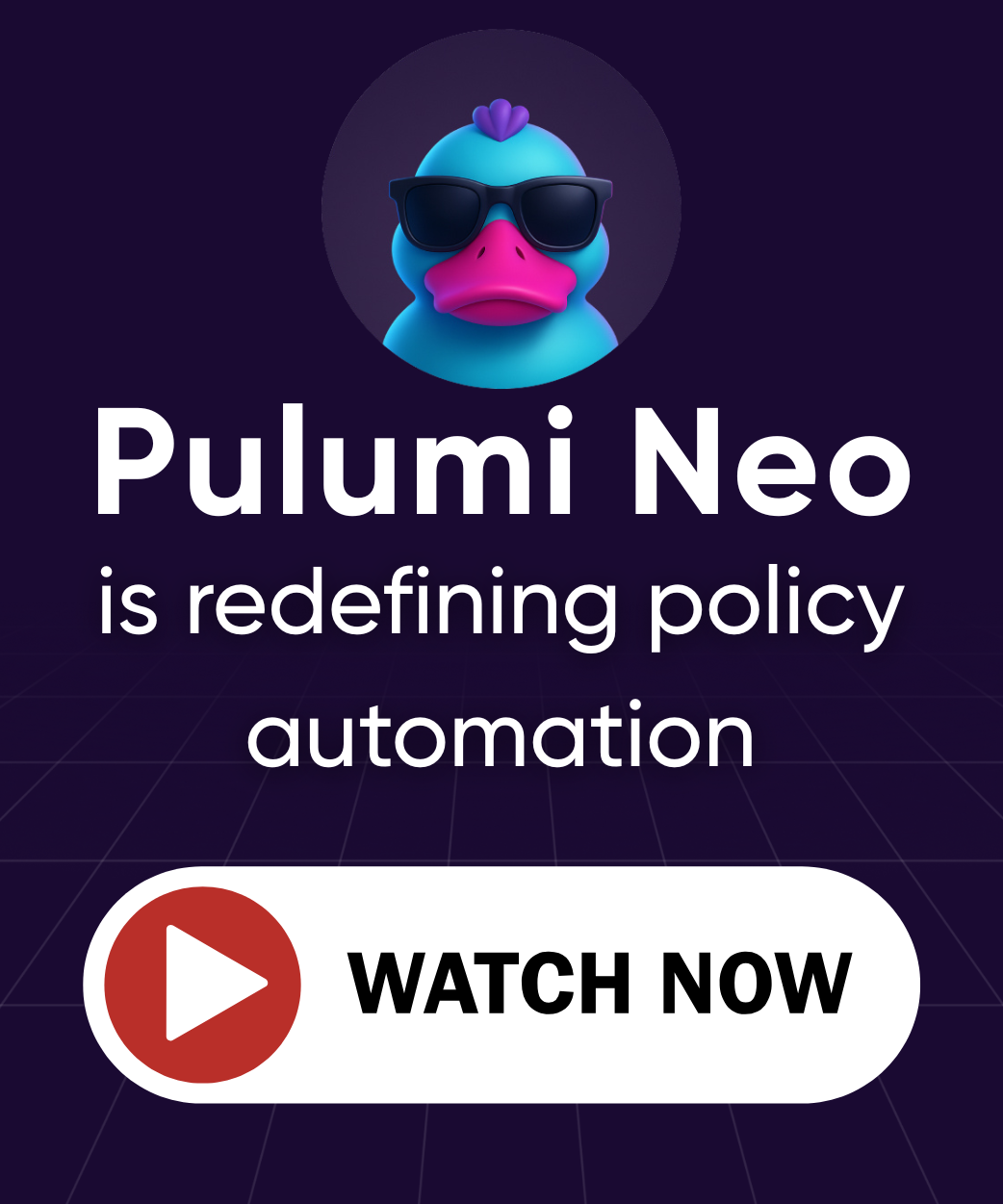Pulumi & Continuous delivery
Pulumi’s approach to infrastructure as code is great for continuous delivery, because it uses source code to model cloud resources. This means updates to your cloud infrastructure can be reviewed, validated, and tested using the same process that you have today. For example, doing code reviews via Pull Requests, running code through linters or static analysis tools, and running unit and integration tests as appropriate. It all “just works” for your cloud infrastructure the same way it would for your application code.
Pulumi can easily integrate into any continuous integration/continuous delivery (CI/CD) system. If your CI/CD system isn’t listed below or you are testing something new, see adding support for CI/CD systems.
Looking to troubleshoot failures related to running Pulumi in CI/CD? Check out our CI/CD troubleshooting guide.
ArgoCD
AWS Code Services
Azure DevOps
Bitbucket
Buildkite
CircleCI
Codefresh
GitHub Actions
GitLab CI
Harness

Google Cloud Build
Jenkins
Octopus Deploy
Pulumi Deployments

Pulumi Kubernetes Operator
JetBrains TeamCity
}}">Spinnaker
TravisCI
Pulumi can also bridge results from your CI/CD system with GitHub, surfacing the results of stack updates on GitHub pull requests. See the Pulumi GitHub App for more information.
Configuration and Secrets
Pulumi is designed to be entirely code-centric, including the way in which configuration and secrets are managed.
Configuration values and secrets are stored safely inside of Pulumi.yaml files, which you will commit.
The source is effectively everything that Pulumi needs to for deployment, with minimal external dependencies.
Secret configuration values are encrypted on app.pulumi.com and are safe to check into your source code repository. But you can use your own secrets provider, ensuring that only you have access to your sensitive information. See Managing Secrets with Pulumi for more information.
Managing Complex Environments
Most real-world environments are complex. Perhaps you have a networking stack that’s independent from your data and application stacks. Pulumi supports “stack references”, which permit one stack to depend upon another. This facilitates continuous delivery and integration at scale.
Using Branches for Environments
Pulumi is agnostic to what sort of branching strategy you take. Most customers use Git-based flows; the most common is to use one branch-per-stack. This allows you to control deployments to environments using your usual commit, code review, and approval process, such as GitHub pull requests.
If you are using GitHub pull requests to trigger updates, you will likely want to use the Pulumi GitHub App. This gives you interactive infrastructure change previews inside of your Pull Request, making it easier to see, review, and comment on any changes before a deployment occurs.
Thank you for your feedback!
If you have a question about how to use Pulumi, reach out in Community Slack.
Open an issue on GitHub to report a problem or suggest an improvement.
